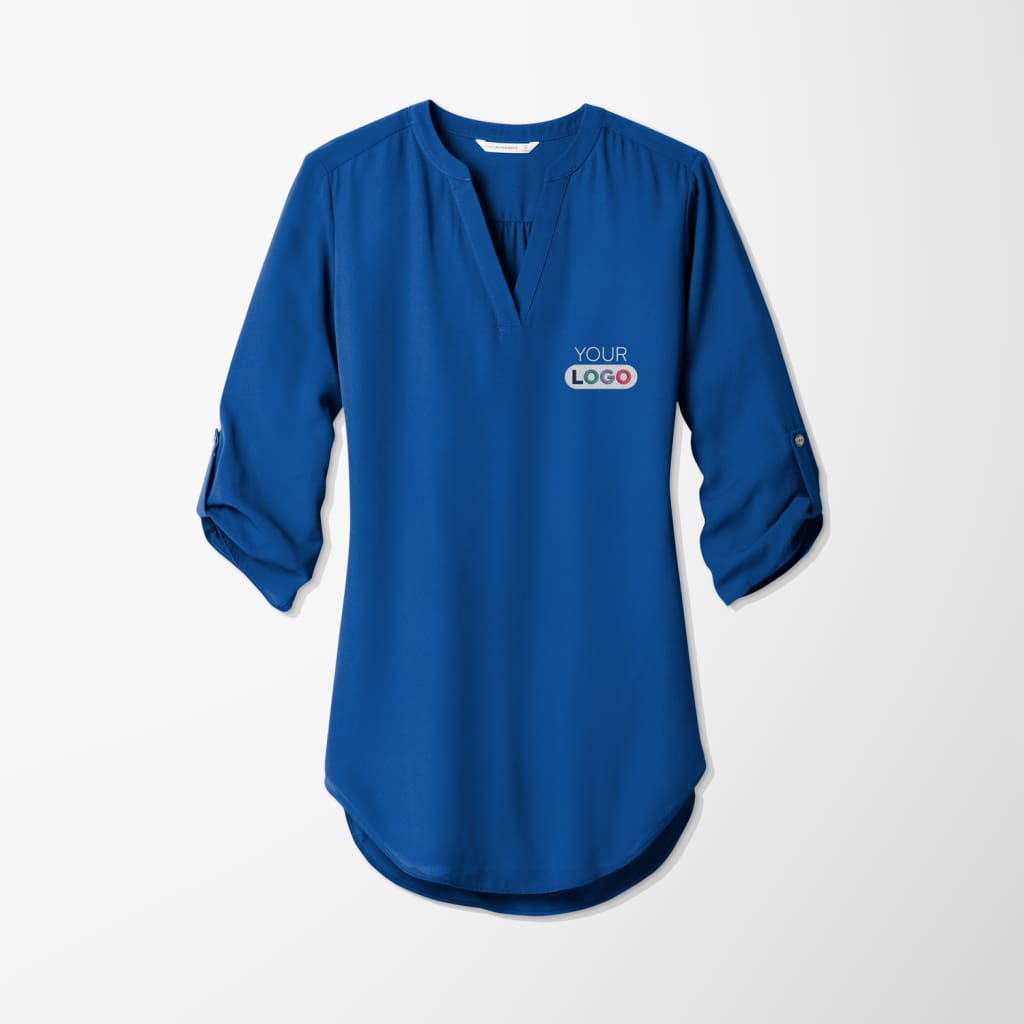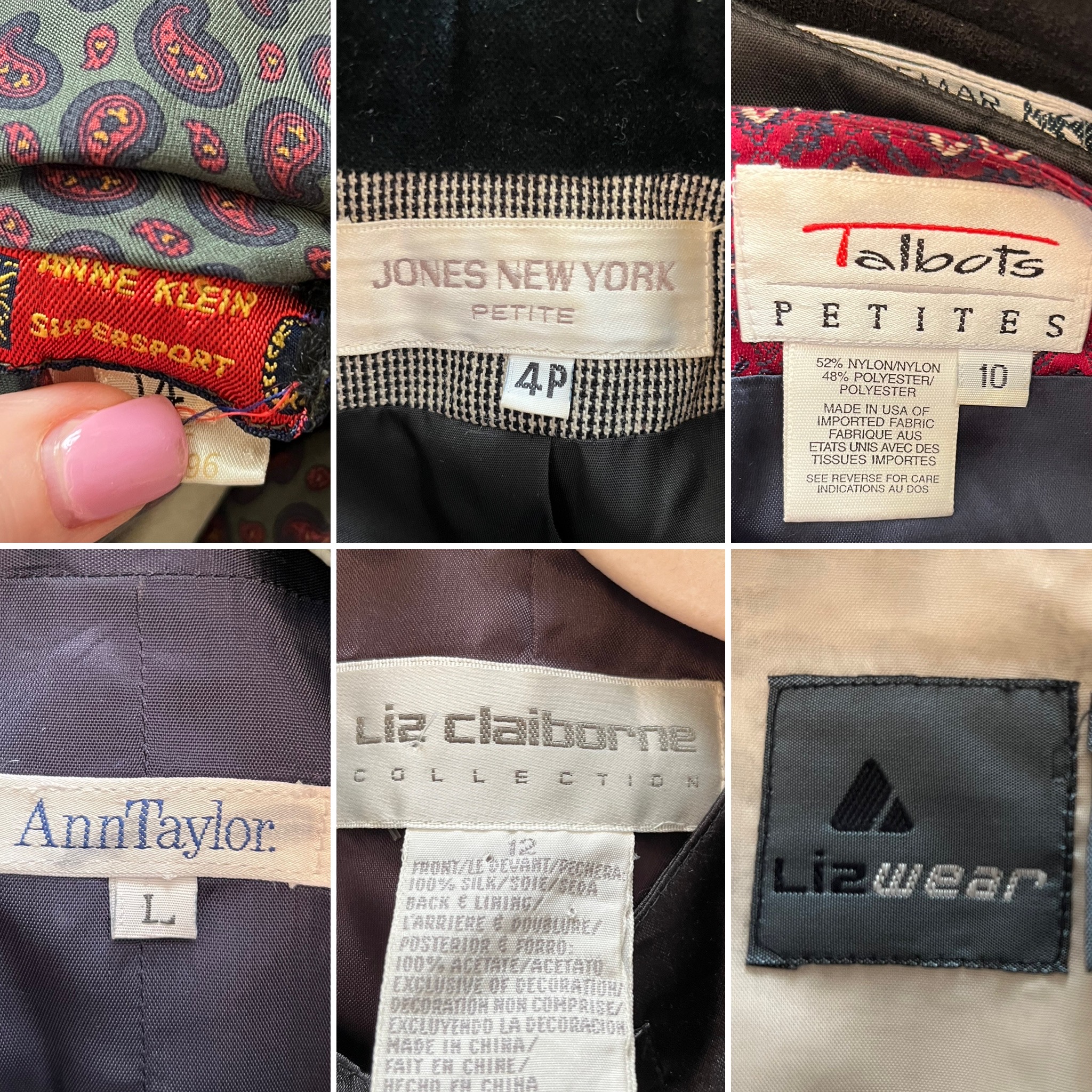Understanding Fabric Weaves and Textures in Branded Clothing
Understanding Fabric Weaves and Textures in Branded Clothing
Blog Article
The Relevance of Sustainable Garments: Just How It Impacts the Atmosphere and Your Storage room
Lasting garments is increasingly recognized for its important role in lessening the ecological influence of the quick fashion business. By concentrating on green products and honest production approaches, it attends to pressing eco-friendly problems. This shift not only benefits the planet but likewise influences consumer choices, bring about a much more thoughtful technique to wardrobe administration. Understanding these dynamics elevates vital inquiries about style's future and individual duty fit it.
The Ecological Footprint of Fast Style

Benefits of Sustainable Materials
Lasting products use substantial advantages, specifically via green textile choices that decrease environmental injury. These products also demonstrate sturdiness and long life, minimizing the requirement for frequent substitutes. Therefore, they add to an extra lasting fashion business and promote liable customer habits.
Eco-Friendly Fabric Choices
While the garment industry has long been connected with quick fads and environmental damage, the surge of eco-friendly fabric selections provides a transformative possibility. Lasting materials such as organic cotton, hemp, and Tencel have acquired appeal because of their lower environmental impact. These materials are typically created without hazardous chemicals and call for less water, reducing their carbon impact - Branded Clothing. Additionally, many eco-friendly textiles are naturally degradable, adding to a circular economy by reducing waste. Picking sustainable products not only sustains environmentally accountable practices yet additionally promotes much healthier environments. As consumers come to be more knowledgeable about their purchasing power, the demand for environmentally friendly textiles encourages brand names to innovate and embrace even more sustainable production methods, inevitably benefiting the earth and future generations
Toughness and Longevity Benefits
Several consumers are significantly recognizing the durability and durability benefits of lasting products in their clothing choices. Unlike traditional textiles, sustainable products such as natural cotton, hemp, and recycled polyester are crafted to stand up to damage, resulting in garments that last longer. This reduced frequency of replacement not just conserves consumers money in time but additionally diminishes waste produced by fast fashion. Additionally, lasting clothes commonly uses eco-friendly manufacturing approaches that improve material strength, adding to a decrease in the total carbon footprint. By buying resilient clothing, consumers can grow a more sustainable wardrobe while taking pleasure in top notch items that preserve their aesthetic and functionality in time. Consequently, resilience and long life stand as vital advantages of selecting sustainable materials.
Reducing Waste Via Lasting Practices
Lowering waste in the fashion industry can be attained through cutting-edge methods such as upcycling and repurposing materials. In addition, embracing minimalist closet approaches motivates customers to focus on quality over amount, inevitably lowering clothes usage. Together, these strategies contribute significantly to an extra sustainable clothing model.
Upcycling and Repurposing Products
Upcycling and repurposing materials have actually become ingenious techniques in the fashion business, transforming disposed of fabrics right into important brand-new products. This approach not just decreases waste however also motivates creative thinking and uniqueness in garments layout. By taking old garments and products, designers can develop unique items that mirror personal design while reducing the demand for brand-new resources. Furthermore, upcycling commonly requires less power and water contrasted to conventional production procedures, substantially decreasing the environmental impact of fashion. As consumers end up being extra aware of sustainability, the popularity of upcycled garments remains to rise, advertising a circular economy. Eventually, these methods add to a more sustainable future, where style prioritizes environmental health over fast production and consumption.

Minimal Closet Strategies
As individuals progressively seek to decrease their ecological influence, taking on minimalist wardrobe techniques has gotten grip as a reliable strategy to lasting fashion. These strategies stress high quality over quantity, encouraging consumers to curate a smaller sized collection of flexible, long lasting apparel. By focusing on ageless pieces that can be mixed and matched, people can lower the frequency of acquisitions and inevitably decrease waste.Additionally, minimalism promotes conscious intake, advising buyers to review the honest and environmental effects of their selections. This approach not just cultivates an extra lasting way of life however also simplifies day-to-day decision-making regarding outfit. As individuals accept minimalist concepts, they contribute to a style culture that values sustainability and responsible consumerism, inevitably causing a more eco-conscious culture.
The Function of Ethical Labor in Lasting Fashion
While lots of consumers are increasingly familiar with the environmental effects of their clothes selections, the relevance of ethical labor practices in sustainable style can not be neglected. Moral labor incorporates fair incomes, risk-free working conditions, and respect for employees' rights, developing the foundation of accountable style production. Brands that prioritize honest labor not just uplift neighborhoods however also set a criterion for liability in the industry.Moreover, the assimilation of honest practices promotes openness, allowing consumers to make informed selections concerning their acquisitions. This technique contrasts greatly with fast fashion's exploitative labor designs, which commonly prioritize earnings over individuals. By supporting business committed to honest labor, consumers add to a system that values human dignity alongside environmental sustainability. Subsequently, ethical labor is not just an add-on; it is important to the broader mission of sustainable style, making certain that the quest for eco-friendliness does not come at the cost of civils rights.
The Impact of Lasting Garments on Carbon Emissions
Sustainable clothes has the potential to greatly decrease carbon discharges connected with the apparel industry. Standard garment production contributes notably to greenhouse gas exhausts, mostly because of energy-intensive production procedures and try this out making use of non-renewable resources. On the other hop over to these guys hand, sustainable fashion concentrates on environmentally friendly materials, such as natural cotton or recycled fibers, which often need less power to produce.Moreover, sustainable brand names have a tendency to adopt extra reliable manufacturing methods, minimizing waste and lowering total discharges. By focusing on toughness and ageless design, lasting garments motivates consumers to acquire less frequently, more decreasing the carbon footprint related to overconsumption.Additionally, numerous lasting brands are dedicated to transparency in their supply chains, enabling customers to make informed selections that align with their worths. Eventually, changing towards lasting clothes can bring about a considerable decrease in carbon discharges, adding to a much healthier world and an extra sustainable future for the style market.
Supporting Regional Economies With Lasting Choices
The shift towards sustainable garments not just addresses environmental problems but also significantly advantages neighborhood economic climates. By choosing lasting style, consumers frequently support local craftsmens and small companies, enhancing community resilience. These business typically operate a smaller range, focusing on workmanship and ethical methods over mass production.Investing in locally made lasting clothing cultivates task production and promotes economic growth within neighborhoods. As customers end up being much more knowledgeable about the ecological effect of their purchases, they significantly look for out items that show their values. This demand encourages neighborhood suppliers to take on lasting practices, contributing to a circular economy.Moreover, sustaining neighborhood businesses decreases transportation discharges, aligning with eco-conscious customer habits. The interconnectedness of lasting clothing and neighborhood economic situations emphasizes the crucial duty that private options play in promoting both economic and ecological health and wellness. By promoting these local connections, areas can prosper while additionally working towards a more lasting future.
Transforming Your Storage Room: Tips for a Lasting Wardrobe
As individuals look for to minimize their ecological influence, changing a closet right into a sustainable closet becomes a crucial step. One efficient technique is to evaluate existing garments, keeping just products that are put on regularly which line up with sustainability goals. Focusing on top quality over amount is crucial; investing in durable items from environment-friendly brands can substantially minimize waste.Additionally, incorporating used items can breathe brand-new life into a wardrobe while reducing environmental damages. Organizing clothing swaps with close friends or contributing extra things can further promote sustainability.When purchasing, people ought to seek products that are natural, recycled, or eco-friendly, and avoid rapid fashion merchants - Branded Clothing. Ultimately, exercising conscious my site consumption by thoughtfully thinking about each acquisition can add to a much more sustainable way of life. By applying these tips, one can develop a wardrobe that mirrors individual style while supporting ecological stewardship
Often Asked Questions
How Can I Determine Sustainable Clothing Brands?
To determine lasting garments brand names, one need to look into products made use of, look for certifications like Fair Profession, and check out the brand name's openness regarding their production processes, labor practices, and environmental impact, guaranteeing environment-friendly and honest methods are prioritized.
What Are the Prices Connected With Sustainable Fashion?
The prices connected with sustainable fashion can vary considerably. Greater manufacturing costs, ethical sourcing, and environmentally friendly materials typically result in enhanced retail costs, which may discourage some consumers while attracting environmentally aware consumers.
Can Sustainable Clothing Be Fashionable and Fashionable?
Lasting apparel can undoubtedly be stylish and trendy. Developers significantly prioritize cutting-edge materials and ethical manufacturing techniques, verifying that fashion and sustainability can coexist. Consumers now have varied choices that mix looks with environmental awareness.
Just How Does Washing Clothing Affect Their Sustainability?
Washing clothes greatly influences sustainability by consuming water and energy, adding to air pollution, and creating microplastic release. Constant washing can degrade fabrics, reducing their lifespan and boosting the demand for replacements, inevitably intensifying ecological concerns.
What Is the Life-span of Sustainable Garments Compared to Quick Style?
The lifespan of sustainable garments normally exceeds that of quick style items, typically long lasting numerous years due to high quality products and workmanship. On the other hand, quick style garments might degrade rapidly, requiring more regular substitutes. Lasting garments is increasingly recognized for its vital function in minimizing the ecological effect of the rapid style market. While numerous customers are increasingly conscious of the ecological effects of their apparel options, the importance of moral labor methods in sustainable fashion can not be neglected. Branded Clothing. Lasting clothes has the prospective to greatly reduce carbon exhausts connected with the style market. In comparison, lasting style concentrates on environmentally friendly products, such as organic cotton or recycled fibers, which commonly need less power to produce.Moreover, sustainable brands often tend to embrace extra reliable production practices, reducing waste and reducing overall exhausts. By prioritizing toughness and ageless design, lasting clothes encourages customers to buy less frequently, further reducing the carbon impact linked with overconsumption.Additionally, several lasting brands are committed to openness in their supply chains, allowing consumers to make enlightened options that align with their worths
Report this page